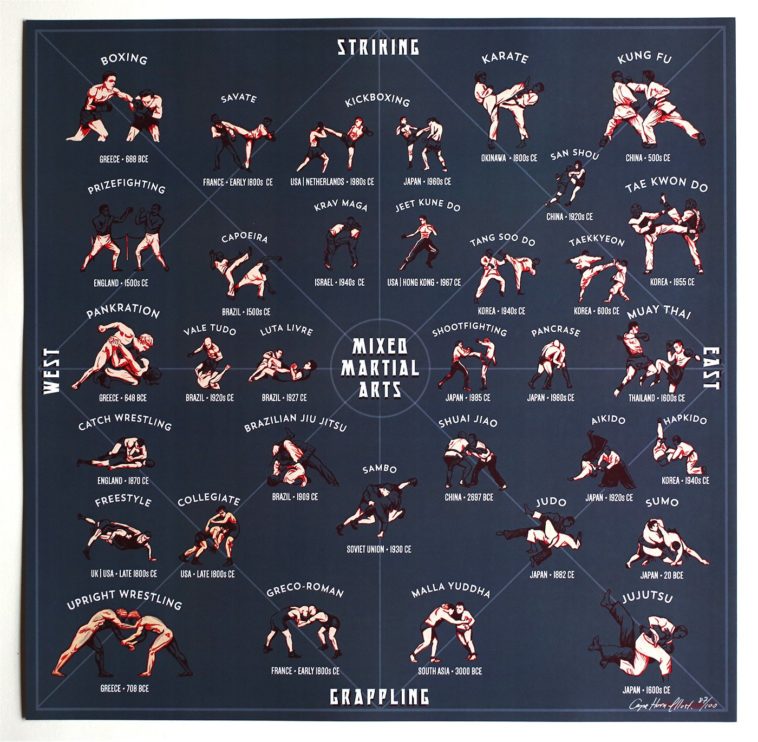The Background And Philosophy Of Fighting Style: A Deep Dive
The Background And Philosophy Of Fighting Style: A Deep Dive
Blog Article
Uploaded By-Barber Francis
Step into the old globe where martial arts were substantiated of necessity in diverse regions. Cultures crafted distinct battling styles intertwined with historic contexts. Techniques advanced over centuries with dedicated technique and social exchanges. Today, contemporary martial arts mix typical aspects for optimal effectiveness. Philosophically, martial arts highlight technique, self-improvement, and consistency. click here for info , humbleness, and balance are foundational concepts directing experts towards growth and resilience. Discover the midsts of this rich history and philosophy to discover the profound influences shaping this enduring self-control.
Origins of Martial Arts
Fighting style came from different areas worldwide, developing as functional combat systems to resist risks. These old fighting styles were established out of necessity, with each society crafting techniques matched to their unique atmospheres and challenges. From the grappling arts of Jujutsu in Japan to the striking strategies of Kung Fu in China, martial arts were deeply intertwined with the historical, social, and social fabric of their particular cultures.
In Japan, the samurai class polished martial arts like Kenjutsu, the art of the sword, which later developed right into the extra popularized form of Kendo. On the other hand, in Brazil, Capoeira became a blend of dancing and combat, created by enslaved Africans as a method to resist fascism. Each martial art lugs with it a rich background and viewpoint, mirroring the worths and beliefs of the people who exercised them.
As you explore the origins of martial arts, you uncover a tapestry of human resourcefulness, durability, and the unyielding spirit of warriors throughout time.
Advancement of Techniques
With centuries of practice and refinement, fight methods within different martial arts have undertaken a profound advancement. From old styles like Kung Fu and Karate to a lot more modern techniques such as Brazilian Jiu-Jitsu and Krav Maga, the development of techniques has been driven by a mix of social influences, sensible applications, and technical advancements.
One considerable aspect of this advancement is the cross-pollination of strategies between different martial arts. For instance, strategies from standard Japanese Jiu-Jitsu were incorporated right into the creation of Judo by Jigoro Kano in the late 19th century. This blending of designs has caused the development of crossbreed martial arts like Mixed Martial Arts (MIXED MARTIAL ARTS), which combine components of striking, grappling, and entry strategies.
Furthermore, the development of techniques has actually been formed by the increasing emphasis on effectiveness and effectiveness in battle. Professionals have continuously sought to fine-tune their methods with rigorous training, testing, and competitors, causing the growth of extremely specialized and effective fighting designs. Overall, the development of methods in martial arts mirrors the dynamic nature of battle and the ongoing quest for improvement and innovation.
Philosophical Structures
Exploring the underlying philosophical concepts of martial arts offers insight into their core worths and leading beliefs. At the heart of several martial arts techniques is the principle of discipline itself. By training your mind and body to work as one cohesive system, you cultivate discipline that extends beyond the dojo or fitness center into day-to-day life. This technique incorporates respect, humility, and self-control, shaping not simply your physical capacities but additionally your character.
One more basic philosophical foundation in martial arts is the idea of constant self-improvement. The journey of mastering a martial art is nonstop, with specialists frequently aiming to much better themselves, both literally and psychologically. This focus on development cultivates resilience, perseverance, and a growth way of thinking that can be put on all aspects of life.
In addition, martial arts emphasize the importance of harmony and balance. Strategies are designed to use a challenger's energy against them, highlighting the concept of producing and rerouting pressure rather than fulfilling it head-on. This ideology reaches interpersonal partnerships, advertising relaxed resolutions and good understanding. By embracing these philosophical structures, martial musicians not just improve their battle abilities but likewise grow a way of living centered on individual growth, regard, and consistency.
Verdict
Finally, the history and philosophy of martial arts use an abundant tapestry of practice, discipline, and self-improvement.
Consider example the tale of Bruce Lee, who changed martial arts by blending various designs and viewpoints to produce his own unique kind of Jeet Kune Do.
With devotion and development, martial musicians remain to press borders and motivate others to reach their complete possibility both in combat and in life.
